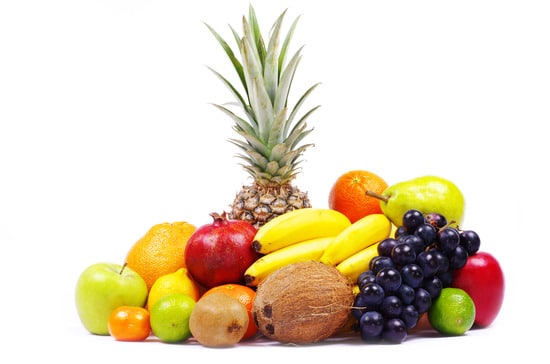Fruit is such a happy part of life! It adds color, fiber, and the sweet taste of fructose to meals and snacks. Fruit also has other goodies like antioxidants, vitamins, and minerals. But, like any perishable food, fresh fruit needs a helping of TLC (tender loving care) to preserve its nutrients. So, here are some purchasing, handling, and storage tips to keep fruit wholesome and delicious.
Your friends can be old and wrinkly — your fruit shouldn’t be.
Buy fruit that is firm, plump, and, if possible, grown close to home because the nutrients in fruit decline over time. Heat is also destructive to nutrients, so fruit sold at open air markets during hot summer months may not be the best choice.
Always choose fruit that is blemish-free without any bruises or cuts that can let spoilage bacteria — or even pathogenic bacteria — into the flesh. Once pathogenic bacteria have invaded, cutting away the bad part on the fruit and eating the rest isn’t a food-safe option and the fruit should be discarded.
A bowl of fruit looks pretty sitting on your kitchen counter, but most fruits should be refrigerated.
Fruit, except avocados and underripe bananas, should be stored, covered, in a refrigerator set below 40 °F. Refrigeration slows down the action of the fruit’s natural enzymes that cause fruit to decay and lose nutrients.
Covering the fruit helps keep the moisture in, cuts down the fruit’s exposure to air, and also protects fruit from cross-contamination with other foods in the refrigerator. As an added precaution, store fruit on the upper shelves of the refrigerator, so that any refrigerator spills won’t rain down on the fruit.
Watch when — and how — you wash.
Fruit should be washed just before it’s eaten which means that when you store fruit in the refrigerator for later use, it should not be washed first. That’s because any moisture left on the fruit after washing will encourage decay and the growth of mold. Wash fruit by gently rubbing it with your fingers under cool, running water without using any detergent or bleach and dry thoroughly. Commercially available fruit and veggie washes are not recommended.
Fruit has more nutrients when it’s eaten raw and unpeeled, but, even if a fruit is going to be eaten without the peel, it still needs to be washed before peeling. Otherwise, when you’re cutting off the peel, the knife blade can carry any bacteria on the outside of the fruit to the inside.
 Ellen Stokes, MS, RD, LD is an award-winning video producer, director, and writer in addition to being a registered dietitian. Ellen writes and creates videos about nutrition education, food safety, menu planning, grocery shopping, and healthful cooking on a budget. Ellen has worked with organizations and companies including WebMD, the Partnership for Food Safety Education, and the University of Georgia Food Science Department. Ellen formerly worked for CNN as a writer and producer and teaches food safety and nutrition for Georgia State University. Check her out on Twitter @EllenS_RD.
Ellen Stokes, MS, RD, LD is an award-winning video producer, director, and writer in addition to being a registered dietitian. Ellen writes and creates videos about nutrition education, food safety, menu planning, grocery shopping, and healthful cooking on a budget. Ellen has worked with organizations and companies including WebMD, the Partnership for Food Safety Education, and the University of Georgia Food Science Department. Ellen formerly worked for CNN as a writer and producer and teaches food safety and nutrition for Georgia State University. Check her out on Twitter @EllenS_RD.

